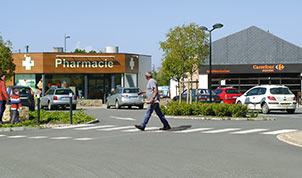WHAT IS LAXIMETRY?
Definition of laximetry
The simplest definition that we could attribute to laximetry is the following: it is the objective evaluation of knee laxity.
Laxity Assessment Device - DYNEELAX
In order to manage an anterior cruciate ligament (ACL) injury, accurate assessment of knee laxity is crucial to be efficient. While clinical physical maneuvers are essential, they often rely on subjective factors such as clinician experience, muscle relaxation, and inherent knee variability. To analyze the state and performance of the ACL, advanced imaging techniques such as the MRI can also be used but cannot directly evaluate knee stability. Therefore, it is against this background that laximetry was set, to supplement physical exam findings.
Techniques of laximetry have been introduced 30 to 40 years ago by quantifying the tibia displacement resulting from an applied force. Clinically speaking, laximetry is best described as a dichotomous tool used in combination with physical exam maneuvers for diagnostic purposes.
In the past, laximetry was only used for research purposes because of its objective results which allowed comparison of different factors such as surgical techniques or rehabilitation regimens but nowadays, it is more and more common to use laximetry to monitor post-operative laxity.
There are two main types of laximetry:
- Stress imaging: It is a method of visual observation and quantification of the knee joint laxity in response to an applied stress. The TELOS is a common medical device that applies this type of laximetry.
- Arthrometry: arthrometers are medical devices designed to apply a reproducible force across the knee and mechanically measure the resulting displacement. The GNRB is a common arthrometer/laximeter that applies this type of laximetry.
Many devices have been designed during the past decades in both of these categories such as the TELOS concerning stress imaging and the KT 1000 for arthrometry but the problem relating to most of them is the fact that they only run static tests (result given while applying a single force on the knee).
It is in this perspective that Genourob created the GNRB or the DYNEELAX. These medical devices indeed allow running dynamic tests on the knee. The DYNEELAX and GNRB are automated dynamic laximeters (arthrometer).
This characteristic makes this device unique of a kind much more efficient than any other arthrometer as it enables the user to objectively evaluate the knee stability and its displacement differential whereas other laximeters only put forward the displacement differential.
Known arthrometers used in laximetry
Concerning arthrometry, the most common arthrometers known in the orthopaedic field are the GNRB, the KT 1000, the KT 2000 and the rolimeter. Concerning stress imaging devices, the TELOS is the most common one found nowadays but unlike the GNRB, it is a very invasive device.
The GNRB is the most recent and innovating arthrometer as it does dynamic ACL analysis by offering doctors the possibility of analyzing the compliance curves (opposite of stiffness curves) of the ACL using the LDA® Method.










